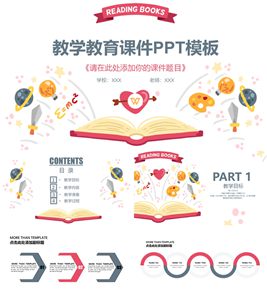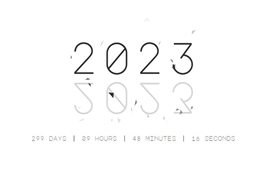你知道Laravel Collection的实际使用场景什么吗?
下面给大家介绍Laravel Collection的实际使用场景,希望对需要的朋友有所帮助!
Laravel Collection 实际使用
这篇笔记用来整理Collection 在Laravel 的实际应用场景。
求和
需求:遍历$orders 数组,求price 的和。
- <?php
- // 引入package
- require __DIR__ . '/vendor/autoload.php';
- $orders = [[
- 'id' => 1,
- 'user_id' => 1,
- 'number' => '13908080808',
- 'status' => 0,
- 'fee' => 10,
- 'discount' => 44,
- 'order_products'=> [
- ['order_id'=>1,'product_id'=>1,'param'=>'6寸','price'=>555.00,'product'=>['id'=>1,'name'=>'蛋糕名称','images'=>[]]],
- ['order_id'=>1,'product_id'=>1,'param'=>'7寸','price'=>333.00,'product'=>['id'=>1,'name'=>'蛋糕名称','images'=>[]]],
- ],
- ]];
1、使用传统的foreach 方式进行遍历:
- $sum = 0;
- foreach ($orders as $order) {
- foreach ($order['order_products'] as $item) {
- $sum += $item['price'];
- }
- }
- echo $sum;
2、使用集合的map、flatten、sum:
- $sum = collect($orders)->map(function($order){
- return $order['order_products'];
- })->flatten(1)->map(function($order){
- return $order['price'];
- })->sum();
- echo $sum;
map:遍历集合,返回一个新的集合。
flatten:将多维数组转换为一维。
sum:返回数组的和。
3、使用集合的flatMap、pluck、sum:
- $sum = collect($orders)->flatMap(function($order){
- return $order['order_products'];
- })->pluck('price')->sum();
- echo $sum;
flatMap:和map 类似,不过区别在于flatMap 可以直接使用返回的新集合。
4、使用集合的flatMap、sum:
- $sum = collect($orders)->flatMap(function($order){
- return $order['order_products'];
- })->sum('price');
sum:可以接收一个列名作为参数进行求和。
格式化数据
需求:将如下结构的数组,格式化成下面的新数组。
- // 带格式化数组
- $gates = [
- 'BaiYun_A_A17',
- 'BeiJing_J7',
- 'ShuangLiu_K203',
- 'HongQiao_A157',
- 'A2',
- 'BaiYun_B_B230'
- ];
- // 新数组
- $boards = [
- 'A17',
- 'J7',
- 'K203',
- 'A157',
- 'A2',
- 'B230'
- ];
1、使用foreach 进行遍历:
- $res = [];
- foreach($gates as $key => $gate) {
- if(strpos($gate, '_') === false) {
- $res[$key] = $gate;
- }else{
- $offset = strrpos($gate, '_') + 1;
- $res[$key] = mb_substr($gate , $offset);
- }
- }
- var_dump($res);
2、使用集合的map以及php 的explode、end:
- $res = collect($gates)->map(function($gate) {
- $parts = explode('_', $gate);
- return end($parts);
- });
3、使用集合的map、explode、last、toArray:
- $res = collect($gates)->map(function($gate) {
- return collect(explode('_', $gate))->last();
- })->toArray();
explode:将字符串进行分割成数组
last:获取最后一个元素
统计GitHub Event
首先,通过此链接获取到个人事件json。
一个 PushEvent计 5 分,一个 CreateEvent 计 4 分,一个 IssueCommentEvent计 3 分,一个 IssueCommentEvent 计 2 分,除此之外的其它类型的事件计 1 分,计算当前用户的时间得分总和。
- $opts = [
- 'http' => [
- 'method' => 'GET',
- 'header' => [
- 'User-Agent: PHP'
- ]
- ]
- ];
- $context = stream_context_create($opts);
- $events = json_decode(file_get_contents('http://api.github.com/users/0xAiKang/events', false, $context), true);
1、传统foreach 方式:
- $eventTypes = []; // 事件类型
- $score = 0; // 总得分
- foreach ($events as $event) {
- $eventTypes[] = $event['type'];
- }
- foreach($eventTypes as $eventType) {
- switch ($eventType) {
- case 'PushEvent':
- $score += 5;
- break;
- case 'CreateEvent':
- $score += 4;
- break;
- case 'IssueEvent':
- $score += 3;
- break;
- case 'IssueCommentEvent':
- $score += 2;
- break;
- default:
- $score += 1;
- break;
- }
- }
2、使用集合的map、pluck、sum 方法:
- $score = $events->pluck('type')->map(function($eventType) {
- switch ($eventType) {
- case 'PushEvent':
- return 5;
- case 'CreateEvent':
- return 4;
- case 'IssueEvent':
- return 3;
- case 'IssueCommentEvent':
- return 2;
- default:
- return 1;
- }
- })->sum();
使用集合的链式编程,可以很好地解决上面那种多次遍历的问题。
3、使用集合中的map、pluck、get 方法:
- $score = $events->pluck('type')->map(function($eventType) {
- return collect([
- 'PushEvent'=> 5,
- 'CreateEvent'=> 4,
- 'IssueEvent'=> 3,
- 'IssueCommentEvent'=> 2
- ])->get($eventType, 1); // 如果不存在则默认等于1
- })->sum();
4、尝试将该需求,封装成一个类:
- class GithubScore {
- private $events;
- private function __construct($events){
- $this->events = $events;
- }
- public static function score($events) {
- return (new static($events))->scoreEvents();
- }
- private function scoreEvents() {
- return $this->events->pluck('type')->map(function($eventType){
- return $this->lookupEventScore($eventType, 1);
- })->sum();
- }
- public function lookupEventScore($eventType, $default_value) {
- return collect([
- 'PushEvent'=> 5,
- 'CreateEvent'=> 4,
- 'IssueEvent'=> 3,
- 'IssueCommentEvent'=> 2
- ])->get($eventType, $default_value); // 如果不存在则默认等于1
- }
- }
- var_dump(GithubScore::score($events));
格式化数据
需求:将以下数据格式化成新的结构。
- $messages = [
- 'Should be working now for all Providers.',
- 'If you see one where spaces are in the title let me know.',
- 'But there should not have blank in the key of config or .env file.'
- ];
- // 格式化之后的结果
- - Should be working now for all Providers. \n
- - If you see one where spaces are in the title let me know. \n
- - But there should not have blank in the key of config or .env file.
1、传统的foreach 方式:
- $comment = '- ' . array_shift($messages);
- foreach ($messages as $message) {
- $comment .= "\n - ${message}";
- }
- var_dump($comment);
2、使用集合的map、implode方法:
- $comment = collect($messages)->map(function($message){
- return '- ' . $message;
- })->implode("\n");
- var_dump($comment);
多个数组求差
需求:两组数据分别代表去年的营收和今年的营收,求每个月的盈亏情况。
- $lastYear = [
- 6345.75,
- 9839.45,
- 7134.60,
- 9479.50,
- 9928.0,
- 8652.00,
- 7658.40,
- 10245.40,
- 7889.40,
- 3892.40,
- 3638.40,
- 2339.40
- ];
- $thisYear = [
- 6145.75,
- 6895.00,
- 3434.00,
- 9349350,
- 9478.60,
- 7652.80,
- 4758.40,
- 10945.40,
- 3689.40,
- 8992.40,
- 7588.40,
- 2239.40
- ];
1、传统的foreach 方式:
- $profit = [];
- foreach($thisYear as $key => $monthly){
- $profit[$key] = $monthly - $lastYear[$key];
- }
- var_dump($profit);
2、使用集合的zip、first、last:
- $profit = collect($thisYear)->zip($lastYear)->map(function($monthly){
- return $monthly->first() - $monthly->last();
- });
zip:将给定数组的值与相应索引处的原集合的值合并在一起。
创建lookup 数组
需求:将如下数组格式化成下面的结果:
- $employees = [
- [
- 'name' => 'example',
- 'email' => 'example@exmaple.com',
- 'company' => 'example Inc.'
- ],
- [
- 'name' => 'Lucy',
- 'email' => 'lucy@example.com',
- 'company' => 'ibm Inc.'
- ],
- [
- 'name' => 'Taylor',
- 'email' => 'toylor@laravel.com',
- 'company'=>'Laravel Inc.'
- ]
- ];
- // 格式化之后的结果
- $lookup = [
- 'example' => 'example@example.com',
- 'Lucy' => ‘lucy@example.com’,
- 'Taylor'=> 'toylor@laravel.com'
- ];
1、传统的foreach 方式:
- $emails = [];
- foreach ($employees as $key => $value) {
- $emails[$value['name']] = $value['email'];
- }
2、使用集合的reduce 方法:
- $emails = collect($employees)->reduce(function($emailLookup, $employee){
- $emailLookup[$employee['name']] = $employee['email'];
- return $emailLookup;
- },[]);
reduce:将每次迭代的结果传递给下一次迭代直到集合减少为单个值。
3、使用集合的pluck 方法:
- $emails = collect($employees)->pluck('name', 'email');
本文网址:https://www.zztuku.com/index.php/detail-9089.html
站长图库 - 你知道Laravel Collection的实际使用场景什么吗?
申明:如有侵犯,请 联系我们 删除。
















您还没有登录,请 登录 后发表评论!
提示:请勿发布广告垃圾评论,否则封号处理!!